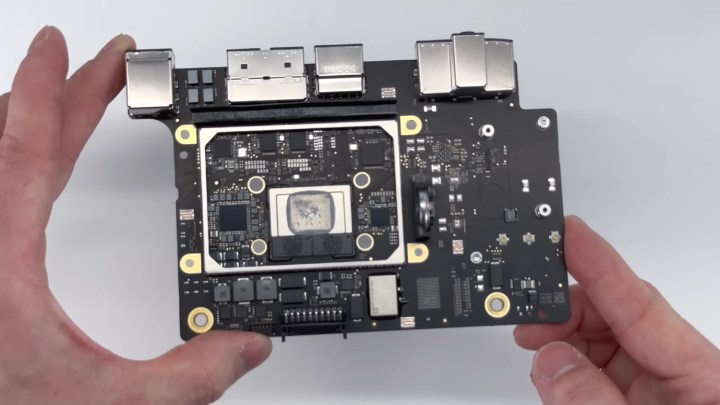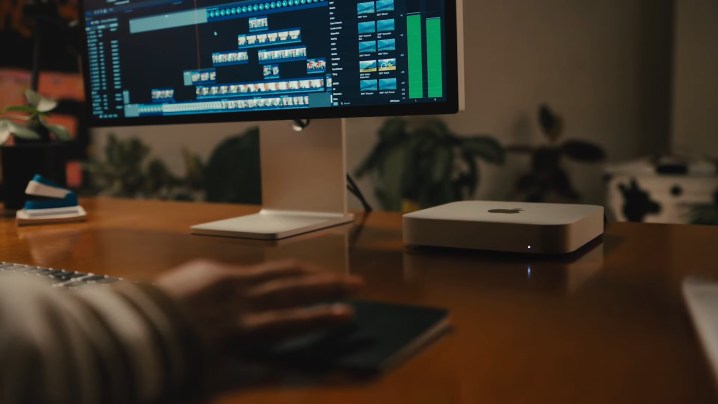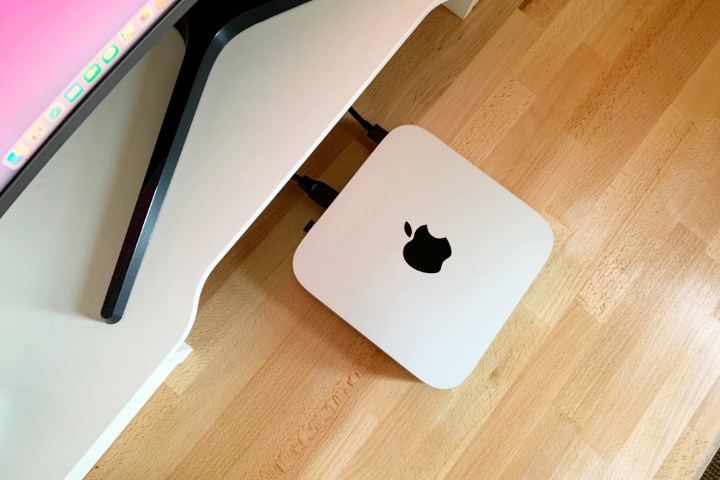Apple’s M2 Mac mini brings a long-awaited update to one of the best desktop computers you can buy. Although it’s an impressive machine overall, you have to pay close attention when configuring one.
Choosing the wrong parts can result in a Mac mini that’s much slower than it should be. We’re here to help you choose the ideal configuration for your budget, as well as steer you away from some performance pitfalls with cheaper models.
Here’s the M2 Mac mini

Apple’s much-needed Mac mini update comes with the new M2 processor, which is easily its biggest draw. Overall, Mac mini M2 reviews say it’s around 15% faster than the previous generation, which isn’t an ideal update. However, the new Mac mini also comes with a $100 price cut, bringing the base price down to $600.
Externally, the Mac mini M2 doesn’t look much different than the previous generation. It carries the same chassis and port selection, though Apple upgraded the new machine with Bluetooth 5.3 and Wi-Fi 6E. The two Thunderbolt ports have also been updated to Thunderbolt 4, supporting up to one 6K display or a 5K display and a 4K display simultaneously.
The exciting update is the M2 Pro processor. Unlike the previous generation, Apple is offering the new Mac mini with an M2 Pro processor, which is also available in the new MacBook Pro. It comes with more cores, allowing the M2 Pro to run much more demanding applications.
In addition to newer Thunderbolt and wireless protocols, the M2 Pro Mac mini comes with four Thunderbolt 4 ports as opposed to the two featured on the base M2 Mac mini. You can also add more storage and memory to the M2 Pro model.
Slow storage is a bad buy on the Mac mini
Apple offers three configurations of the M2 Mac mini as starting points, though you’re free to upgrade certain aspects like storage for the model you want. Here are the base configurations:
| M2 256GB | M2 512GB | M2 Pro | |
| CPU cores | 8 cores | 8 cores | 10 cores |
| GPU cores | 10 cores | 10 cores | 16 cores |
| Memory | 8GB Unified Memory | 8GB Unified Memory | 16GB Unified Memory |
| Storage | 256GB SSD | 512GB SSD | 512GB SSD |
| Ports | 2x Thunderbolt 4 / USB 4, 3.5mm headphone, HDMI, 2x USB 2.1 | 2x Thunderbolt 4 / USB 4, 3.5mm headphone, HDMI, 2x USB 3.1 | 4x Thunderbolt 4 / USB 4, 3.5mm headphone, HDMI, 2x USB 3.1 |
| Networking | Gigabit Ethernet, Wi-Fi 6E, Bluetooth 5.3 | Gigabit Ethernet, Wi-Fi 6E, Bluetooth 5.3 | Gigabit Ethernet, Wi-Fi 6E, Bluetooth 5.3 |
| Price | $600 | $800 | $1,300 |
| Where to buy |
Seems straightforward enough: You have a 256GB and 512GB option for the base M2 chip, as well as an upgrade M2 Pro design. Be very careful with the model you choose, though. The 256GB configuration is much slower than the other options.
Similar to the MacBook Air M2, Apple went cheap on the SSD for the 256GB model. It uses a single NAND chip for storage, resulting in up to 50% slower SSD performance. The MacBook Pro M2 Pro has this same issue, which is a big reason why reviewers are saying to avoid the 256GB model.

The good news is that the storage hit is the only reason to avoid the 256GB model. You’re getting the same M2 processor, 8GB of Unified Memory, and port selection as the 512GB model. We still recommend spending the extra $200, not only for more storage space but also for much faster storage.
How to configure the Mac mini M2

You have several options to configure the Mac mini M2. For the base M2 model, you can upgrade to 16GB or 24GB of Unified memory, and you can opt for 256GB, 512GB, 1TB, or 2TB of storage space. You can also add 10 Gigabit Ethernet over the standard Gigabit Ethernet port.
Here’s the base M2 model we’d recommend:
- Apple M2 with eight-core CPU, 10-core GPU
- 16GB of Unified Memory
- 512GB SSD
- Gigabit Ethernet
This configuration is basically identical to the $800 model Apple has listed, short of a $200 upcharge for 16GB of Unified Memory. 8GB will get you by for standard web browsing, but 16GB can help a lot in applications like Final Cut Pro and Xcode.
We wouldn’t recommend jumping up to 24GB of Unified Memory. It provides a small boost in certain apps, but it’s an additional $200 on top of the 16GB configuration. Similarly, you can pack in up to 2TB of SSD storage, but it’s an $800 upcharge. 512GB solves the speed issue present with the 256GB model, and the M2 Mac mini has plenty of connectivity to support an external hard drive.
The M2 Pro model is a bit easier. Here’s the configuration we recommend:
- M2 Pro with 12-core CPU, 19-core GPU
- 16GB of Unified Memory
- 512GB SSD
- Gigabit Ethernet
A lot of heavy lifting is done here between the SSD and memory bump, but we’re recommending the extra powerful 12-core M2 Pro. It features two extra CPU cores and three extra GPU cores, which combined result in around a 15% performance boost.
You don’t need the upgrade, though. It’s an extra $300 over the base 10-core M2 Pro. You can add 32GB of Unified Memory for an extra $400, as well as up to 8TB of SSD storage for an extra $2,400. Again, 16GB is fine for most people, and you can get external storage for your Mac mini for far less than Apple charges.
Should you buy the Mac mini M2?

Given the Mac mini M1 still sells for around $550 new, it’s worth picking up the Mac mini M2 instead. It’s not significantly more powerful, but any extra power is welcome when it’s around the same price as the previous generation. If you want to see how they stack up, make sure to read our Mac Mini M2 versus M1 comparison.
Avoid the 256GB model if you can, though. Even at its higher $800 price, the 512GB Mac mini M2 is the same price as the previous generation right now. This is the configuration we recommend for most people.
If you’re a power user, the M2 Pro is ideal. It’s more expensive, representing a $200 price increase compared to the Intel-based Mac mini it’s replacing. However, the M2 Pro can go toe-to-toe with even the M1 Max inside the Mac Studio, so it’s definitely the pick for power users.
Editors’ Recommendations

